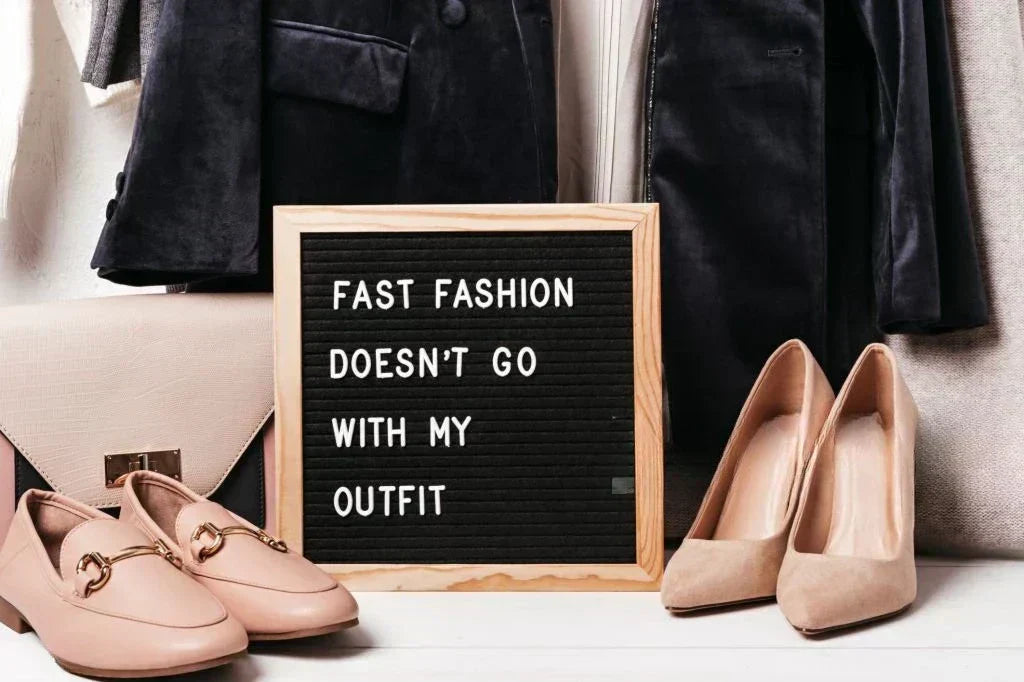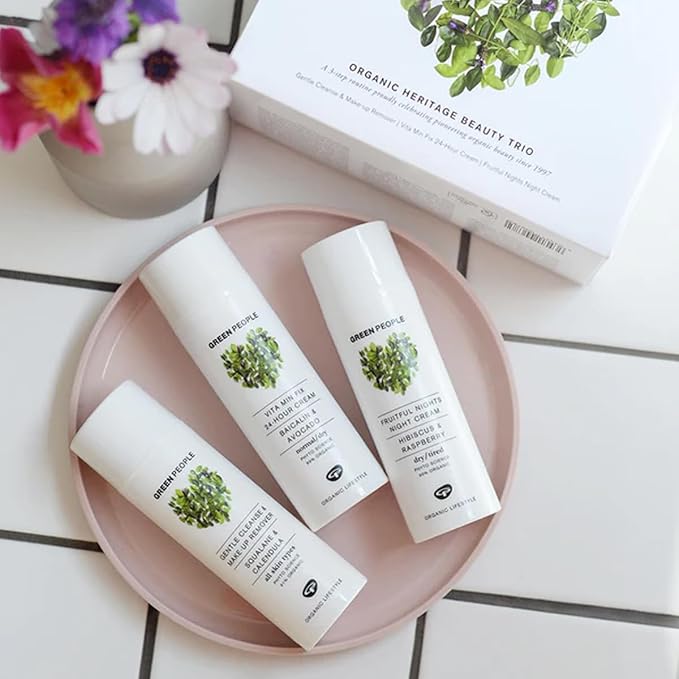Utility trailers are a surprisingly powerful ally in sustainable gardening and low-waste home care. As highlighted in this Friendly Turtle EcoBlog post, they simplify the movement of garden waste, compost, and reclaimed materials, encouraging greener routines with less effort. Whether you’re trimming hedges, tidying your shed, or tackling DIY repairs, a trailer makes the process smoother and reduces fuel use and plastic reliance. It also supports better organisation and smarter recycling. Choosing the right trailer helps avoid overconsumption while extending the life of your tools. This simple addition turns everyday tasks into eco-conscious actions and makes it easier to maintain a cleaner, greener garden all year round.
Share your articles with us and get published! Reach out at hello@friendlyturtle.com.
How to Build a Sustainable Wardrobe: Must-Know Brands & Tips

Fast fashion may be tempting, but it's time to make a change. If you're looking to build a sustainable wardrobe, you're in the right place!
A conscious closet isn't just better for the environment, but it also promotes ethical labor practices and supports eco-friendly brands.
Let’s dive into how you can create a wardrobe that aligns with your values while still keeping things stylish.
Why Choose a Sustainable Wardrobe?
Before we get into the how, let's talk about the why. The fashion industry is one of the biggest polluters in the world, contributing to carbon emissions, water waste, and unethical labor conditions.
By choosing sustainable fashion, you:
- Reduce textile waste
- Support ethical labor practices
- Minimize water and energy consumption
- Invest in quality over quantity
- Lower your carbon footprint
- Encourage slow fashion trends
A sustainable wardrobe is more than just a trend—it’s a lifestyle choice that benefits both the planet and the people involved in the production process.
Now, let's get into how you can start your sustainable fashion journey!
1. Assess Your Current Wardrobe
The best way to start is by evaluating what you already own.
Take stock of your clothing and ask yourself:
- What pieces do I wear the most?
- What items have been sitting untouched for months?
- Can I repurpose or repair anything?
- Do I have timeless basics that never go out of style?
- What colors and styles do I genuinely love?
Decluttering doesn't mean throwing everything away—it means being mindful of what you truly need.
You might find hidden gems in your closet that can be styled in new ways.
2. Buy Less, Choose Better
A sustainable wardrobe isn’t about having more clothes—it’s about having the right clothes. Look for high-quality, versatile pieces that last longer.
Ask yourself before buying:
- Will I wear this at least 30 times?
- Is this made from sustainable materials?
- Does the brand align with ethical values?
- Can I mix and match this with what I already own?
- Does this piece have a timeless appeal?
Investing in a few high-quality, well-made items rather than chasing trends will ensure that your wardrobe is both stylish and sustainable in the long run.
3. Must-Know Sustainable Brands
If you're looking to invest in eco-friendly fashion, here’s a best sustainable brands overview to help you make conscious choices:
1. People Tree
This pioneer in ethical fashion offers fair trade, organic, and handmade clothing, ensuring both sustainability and style. Their pieces are crafted by artisans using traditional skills, preserving craftsmanship while promoting fair wages.
2. Thought Clothing
Known for its timeless designs and natural fabrics, Thought Clothing is perfect for those who love classic yet eco-friendly fashion. They use sustainable materials like hemp, bamboo, and organic cotton.
3. Organic Basics
As the name suggests, Organic Basics focuses on sustainable essentials like underwear and activewear made from eco-friendly fabrics. Their minimalist designs make for perfect everyday staples.
4. Pact
Pact offers affordable organic cotton basics that are ethically made, making sustainable fashion more accessible. Their soft, breathable fabrics ensure comfort while maintaining an eco-conscious approach.
5. Reformation
If you love trendy, feminine fashion but want to keep things green, Reformation is a great choice with its low-impact production. They prioritize recycled materials and limited water usage.
4. Shop Second-Hand ; Vintage
Thrifting is a fun and budget-friendly way to build a sustainable wardrobe. You can find unique, high-quality pieces at second-hand stores, online marketplaces, and vintage shops.
Not only does it save money, but it also extends the life of clothing, reducing waste.
Some great platforms for second-hand shopping include:
- Depop
- Poshmark
- ThredUp
- Vestiaire Collective
- The RealReal
By shopping second-hand, you contribute to a circular fashion economy, where clothes are reused and repurposed rather than discarded.
5. Care for Your Clothes Properly
Longevity is key when it comes to sustainability. Taking care of your clothes means they last longer, reducing the need for replacements.
Here’s how:
- Wash in cold water to save energy and prevent fabric damage
- Air dry instead of using a dryer to extend lifespan
- Use eco-friendly detergents to avoid harmful chemicals
- Repair instead of replace minor damages like loose buttons and small tears
- Store clothes properly to prevent wear and tear
They follow a sustainable manufacturing and distribution process. Ethical companies make sure that their products can be reused or recycled at the end of their life. As such, many of them offer lifetime free repairs, discounts, or store credit for turning in old items purchased from their stores. Some even partner with eco-conscious dry cleaning service providers to encourage garment care that reduces harmful chemicals and extends the life of your clothes.
Proper clothing care not only saves money but also helps reduce waste and overconsumption.
6. Swap & Donate Instead of Discarding
If you have clothes you no longer wear, consider swapping them with friends or donating them to charities instead of throwing them away.
Many organizations accept gently used clothing and give them a new home.
Some brands even have take-back programs where they recycle your old clothes into new garments.
Great places to donate your clothing include:
- Goodwill
- Salvation Army
- Local shelters
- Clothing swap events
You can also host a clothing swap party with friends to refresh your wardrobe without spending a dime!
7. Be Mindful of Fabric Choices
Not all fabrics are created equal. Opt for eco-friendly materials like:
- Organic cotton
- Hemp
- Linen
- Bamboo
- Tencel
- Recycled fabrics
These materials require less water, fewer chemicals, and have a lower environmental impact compared to synthetic fabrics like polyester and nylon, which shed microplastics into the environment.
Final Thoughts
Building a sustainable wardrobe doesn’t happen overnight, but small, mindful steps can make a huge difference.
By choosing ethical brands, shopping second-hand, and caring for your clothes properly, you can create a wardrobe that reflects your values without compromising on style. Let’s embrace slow fashion and make sustainability the new trend!
Making the switch to a sustainable wardrobe is one of the most impactful things you can do for the environment. Not only does it reduce waste and pollution, but it also encourages brands to adopt more ethical practices.
Every purchase you make is a vote for the kind of world you want to live in—so let’s choose wisely!
0 comments
Let customers speak for us
Blog posts
Creating your own eco-friendly skincare line is not just a trend it’s a chance to align beauty with sustainability. This Friendly Turtle EcoBlog guide explores how simple, conscious choiceslike using plant-based, traceable ingredients and minimal, effective formulations can reduce environmental impact without compromising quality. Discover how sustainable packaging, from glass jars to refillable containers, can reflect your values before the product is even opened. Choosing ethical manufacturing partners and understanding regulatory essentials also strengthens your brand’s integrity. With tools like NISHA for custom formulation and a focus on authenticity over buzzwords, this article shows that you don’t need a lab or a big budget to start just clarity, intention, and a genuine commitment to the planet. Whether you're testing a concept or preparing to launch, every small, thoughtful step builds a more responsible beauty future.
Planning an eco-friendly garden doesn’t require vast land or expensive materials just smart choices and the right tools. On Friendly Turtle’s EcoBlog, we explore how digital tools like GardenBox 3D help visualise layouts, test sustainable planting schemes, and reduce resource waste. By understanding your microclimate, choosing native plants, and using compost and recycled materials, you can build a self-sustaining garden that supports biodiversity and thrives over time. Rainwater harvesting, natural mulching, and zone planning help reduce water use and effort. Even the smallest garden can be transformed into a low-maintenance, eco-conscious space that benefits you and the planet. With careful preparation and thoughtful design, your outdoor area becomes not only greener but also more enjoyable, season after season.



